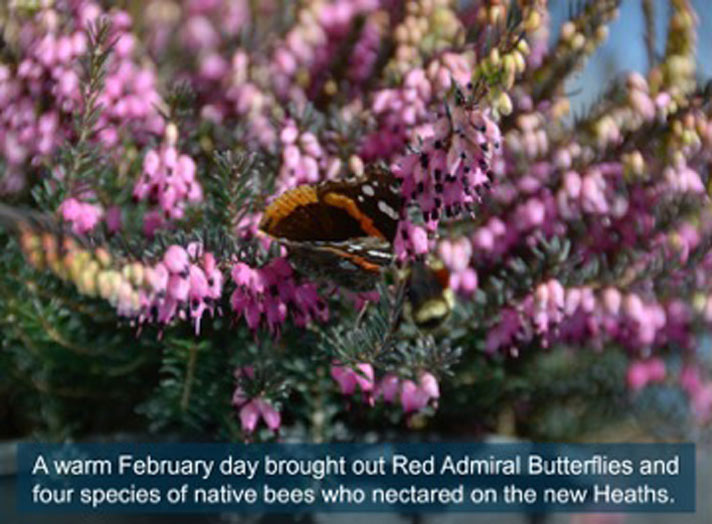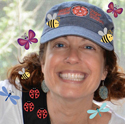Love Thy Pollineighbor – March 2017
At first I thought they were flies. Tiny, black, wings. Two of them I found legs-up in the windowsill. They were swept away with nary a thought. Until I saw another one on the floor. The dustbuster was poised to devour this third creature when something caught my eye. Movement. Was this fly-thing alive?
I dropped to the floor for a closer look. He was moving. Wearily, but moving. Gently, I scooted him onto my hand. He wasn’t black, exactly, because in the light he had a blue metallic sheen. Four wings. I noticed the antennae were long and his eyes were on the side of head. This was no fly. This was a bee. A little mason bee, specifically a blue orchard mason bee.
Like most bees, they are not aggressive and will sting only if handled roughly. Male bees don’t have stingers, rendering them defenseless. The female stingers are called ovipositors, which is how they lay their eggs. No stinger and a short tuft of white facial hair distinguished this little guy as a male.
I didn’t know what to do. Maybe he was hungry? Then again, I have an Italian mother. Food is the solution to every problem. You have a headache? Eat some pasta! Your car won’t start? Have a cannoli!
I keep a stock of sugar water in the fridge for the Anna’s Hummingbirds. Placing a few drops on my palm, I watched my little buddy imbibe the juice, his proboscis working overtime. He was hungry. He took some more and cleaned himself. Now what?
I placed him in a sprouting jar and rushed to Shooting Star Nursery. It’s a bee emergency! Joey mollified my angst with his infinite bee knowledge. He confirmed the identity of this unseasonable visitor. Shooting Star has a plethora of winter-blooming plants, so we set the bee free to indulge in the blossoms of sweet goodness. A bee buffet. I was assured my little bee would find a safe hole to rest when the temperatures dropped again. Fortunately, I purchased two fuchsia-colored Heath plants, because six more bees emerged in the house. I’m not sure from where they came, but I suspect from old wood we brought inside to burn. Mason bees nest in holes or tunnels (dead wood, reeds, trees) rather than hives. Check your wood before burning. If you see holes that have been plugged by mud, you may have yourself some overwintering bees in there. I recommend keeping that wood outside until spring as they normally emerge around mid-march or after temperatures reach 50-55°F. They are then busy pollinating until the beginning of June before a 10-month overwinter period.
Mason bees produce only one generation a year and pollinate about 95% of the flowers they visit according to the OSU extension article Nurturing Mason Bees in Your Backyard in Western Oregon, and the Xerces Society considers native bees to be more efficient than honey bees at pollinating particular crops like squash, berries, and tree fruits.
Our native bees are also more vulnerable to pesticides, because they sleep outside with 70% nesting in the ground and the other 30% nesting in flowers and small tunnels. With honey bee populations on the decline, native bees play a vital role in our food production.
This little mason bee experience reminded me about the importance of having a food source for our pollinators who show up on warm winter days. Shooting Star suggests these winter blooming plants:
- Strawberry Bush
- Camellia
- Heath
- Witchhazel
- Oregon Grape
- Osmanthus
- Andromeda
- Sweetbox
I was preparing to write more about neonicotinoids in this article, but that plan was interrupted by life. In coming months, I’ll share more about the extraordinary native bees and other beneficial insects and how we can help protect them by creating habitat and using alternative/nontoxic methods for managing pest insects and plants.

 When she’s not working, volunteering, fiddling about the garden, photographing nature, being a pollinactivist, blogging about social and environmental justice, or pawning her eco-children’s book, Kenda, a former Monarch butterfly docent, gets her kicks hanging with her husband, her dog, and the pollineighbors.
When she’s not working, volunteering, fiddling about the garden, photographing nature, being a pollinactivist, blogging about social and environmental justice, or pawning her eco-children’s book, Kenda, a former Monarch butterfly docent, gets her kicks hanging with her husband, her dog, and the pollineighbors.